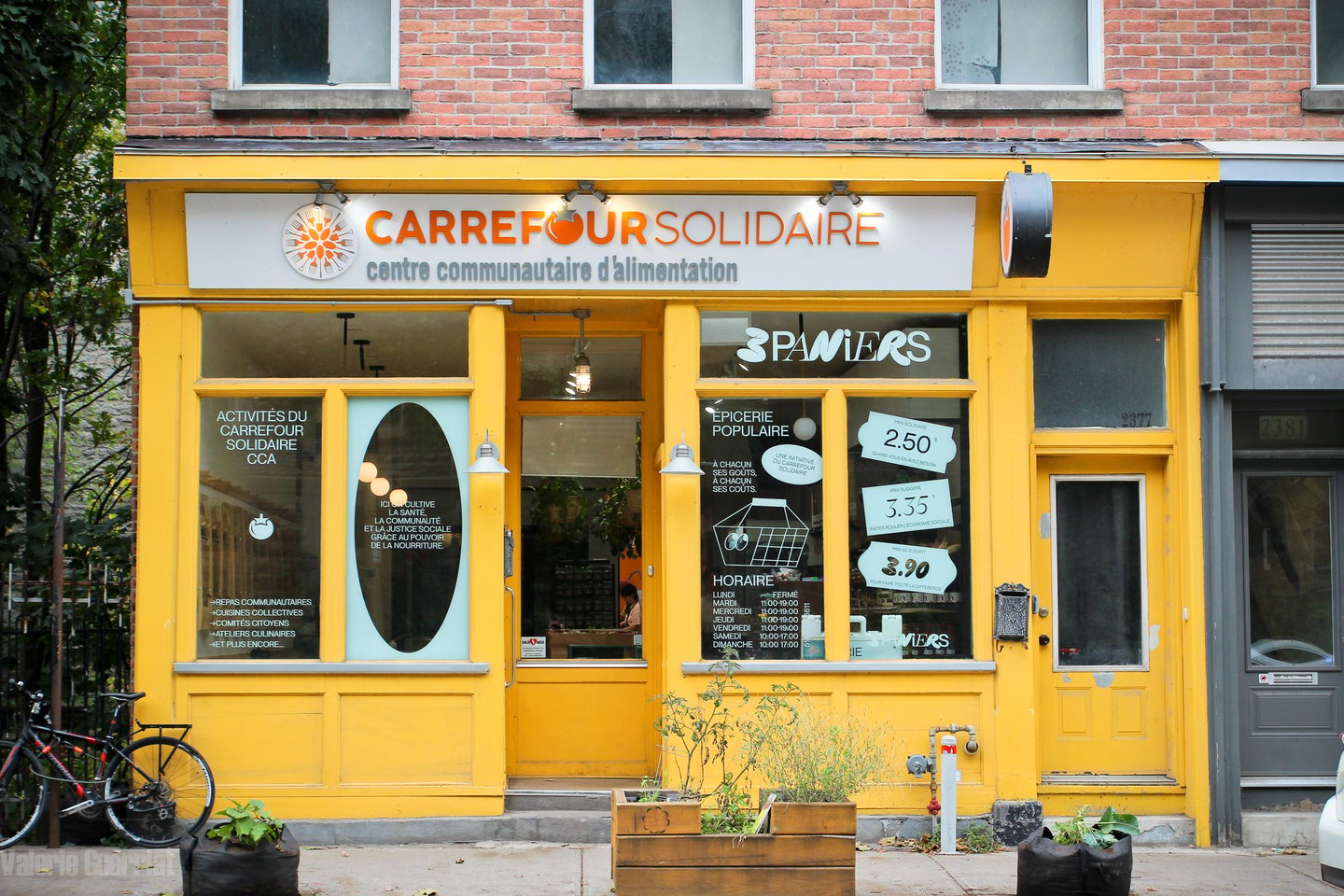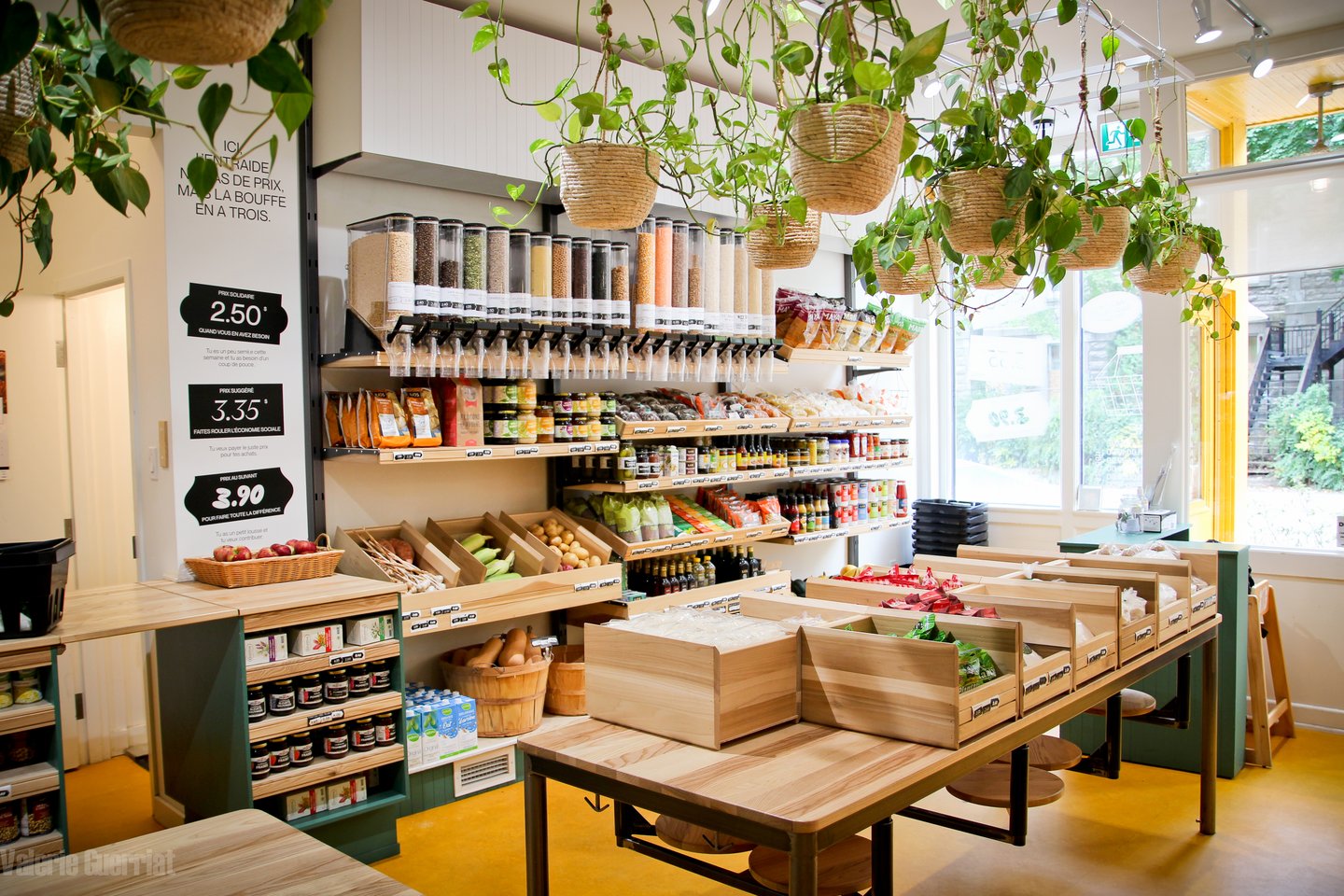Montreal alternative grocery store talks success of pay-what-you-can model
Shoppers at the 3 Paniers grocery store in Montreal’s east-end can choose from three different price points when they reach the cash register, depending on their financial situation.
It’s all part of a mission to counter food insecurity and allow those who are doing well to pay it forward, says Beccah Frasier, co-general manager of the community food group Carrefour solidaire centre communautaire d'alimentation.
“You have a role to play here no matter what’s in your wallet,” she says.
Customers choose from a Solidarity Price, which often reflects the distributor cost, a Suggested Price, which Frasier says reflects a standard social enterprise markup of 30% to 35% and Pay it Forward Price with a 40% to 45% markup that subsidizes the Solidarity Price.
READ: ‘The damage is done:’ Canada’s food bank visits reach new high
Frasier says the concept is inspired by the co-op model in which there are member and non-member prices.
“We were really nervous about whether it would be too complicated for people to understand,” she says. However, a survey conducted after the first year found 100% of clients understood how the model worked.
According to Carrefour solidaire’s latest annual report, 3 Paniers had sales of more than $550,000 in 2023, with 39% of grocery bills paid at the Solidarity Price, 47% at the Suggested Price and 14% at the Pay it Forward Price. (Some of the people who pay the Suggested Price, however, belong to a city-wide food stamp program called Carte proximité.)
When 3 Paniers (meaning three baskets) first opened in January 2022, many opined that nobody would choose the Pay it Forward option, and that most shoppers would select the cheapest price, as they do not need to show proof of revenue, Frasier says.
READ: The gamble of altruism in the grocery aisle
But she’s noticed that people appreciate the store’s ethos. “We find when people do have the ability to contribute a higher price, they do. We don’t have to twist their arms to do it.”
Now open daily, the approximately 450 square-foot supermarket on Sainte-Catherine St. E., east of the Jacques Cartier Bridge, stocks about 600 products.
“We have to make choices strategically as a result of our limited shelf space,” Frasier says. “I think we do a lot with what little square footage we have.”
Featuring a yellow exterior façade and hanging indoor plants, the building houses a community kitchen, rooftop garden and a dining room that serves community meals twice weekly to 100 to 150 people.
3 Paniers is housed in what was traditionally a working-class neighbourhood in Montreal, with a high percentage of seniors and homeless who lack access to fresh, affordable food, Frasier says. The only major grocery store in the area is an IGA.
The store sells everything from fruits and vegetables, dairy products, eggs and meats to pantry items like rice, pasta, oil, flours and canned legumes. There is little in the way of junk food.
“We really wanted to have our shelves look healthy, but healthy eating doesn’t just mean fruits and veggies,” she says. “It also means being able to treat yourself from time to time,” with items like chocolate covered rice crackers or plantain chips.
3 Paniers’ most popular items are prepared meals made in the community kitchen– such as soups and salads, and leftovers. For these items, the Solidarity Prices are much lower (the vegetarian shepherd's pie, for instance, is priced at $3).
“It’s part of our goal to always have something on the shelf that’s ready to eat that’s affordable for people where price is too much of a barrier.”




